
Welcome to my Published Research Page.
Inflation Expectations, Real Rates, and Risk Premia: Evidence from Inflation Swaps
J HAUBRICH, G. PENNACCHI, P. RITCHKEN We develop a model of nominal and real bond yield curves that has four stochastic drivers but seven factors: three factors primarily determine the cross-section of yields while four volatility factors solely determine risk premia. The model is estimated using nominal Treasury yields, survey inflation forecasts, and inflation swap rates and has attractive empirical properties. Time-varying volatility is particularly apparent in short-term real rates and expected inflation. Also, we detail the different economic forces that drive short- and long-term real and inflation risk premia and provide evidence that TIPS were undervalued prior to 2004 and during the recent financial crisis. |
The Review of Financial Studies forthcoming |
Inflation Expectations, Real Rates, and Risk Premia: Evidence from Inflation Swaps
J HAUBRICH, G. PENNACCHI, P. RITCHKEN We develop a model of nominal and real bond yield curves that has four stochastic drivers but seven factors: three factors primarily determine the cross-section of yields while four volatility factors solely determine risk premia. The model is estimated using nominal Treasury yields, survey inflation forecasts, and inflation swap rates and has attractive |
The Review of Financial Studies forthcoming |
Contracting with Asymmetric Demand Information in Supply Chains V. BABICH, H. LI, Y.WANG, P. RITCHKEN We solve a buyback contract design problem for a supplier who is working with a retailer who possesses private information about the demand distribution. We model the retailer’s private information as a space of either discrete or continuous demand states so that only the retailer knows its demand state and the demand for the product is stochastically increasing in the state. We focus on contracts that are viable in practice, where the buyback price being strictly less than the wholesale price, which is itself strictly less than the retail price. We derive the optimal (for the supplier) buyback contract that allows for |
European Journal of Operations Research Vol 217, 2012, 333-341 |
On Correlation and Default Clustering in Credit Markets A. BERNDT, P. RITCHKEN, and Z. SUN We establish Markovian models in the Heath, Jarrow and Morton paradigm that permitan exponential affine representation of riskless and risky bond prices while offering significantflexibility in the choice of volatility structures. Indeed, the models make no restrictions on thevolatility structures of instantaneous riskless rates and credit spreads. Estimating models in our family is typically no more difficult than estimating term structure models in the workhorse affine family. In addition to diffusive and jump-induced default correlations, default events can impact credit spreads of surviving firms. This feature allows a greater clustering of defaults. Numerical implementations highlight the importance of taking interest rate-credit spread correlations, credit spread impact factors and the full credit spread curve information into account |
The Review of Financial Studies, Vol 23, 2010, 2680-2729 |
On Forecasting the Term Structure of Credit Spreads
C.. KRISHNAN, P. RITCHKEN and J. THOMSON Predictions of firm-by-firm term structures of credit spreads based on current spot and forward values can be improved upon by exploiting information contained in the shape of the credit spread curve. However, the current credit-spread curve is not a sufficient statistic for predicting future credit spreads; the explanatory power can be increased further by exploiting information contained in the shape of the riskless-yield curve. In the presence of credit-spread and riskless |
Journal of Financial Intermediation Vol 19, 2010, 529-563 |
Correlation Risk
Investors hold portfolios of assets with different risk-reward profiles for diversification benefits.Conditional on the volatility of assets, diversification benefits can vary over time depending on the correlation structure among asset returns. The correlation of returns between assets has varied substantially over time. To insure against future “low diversification” states, investors might demand securities that offer higher payouts in these states. If this is the case, then investors would pay a premium for securities that perform well in regimes in which the correlation is high. We empirically test this hypothesis and find that correlation carries a significantly negative price of risk, after controlling for asset volatility and other risk factors. |
Journal of Empirical Finance, Vol 16, 2009, 353-367 ( lead article) |
Option and Forward Contracting with Asymmetric Information: H. LI, P. RITCHKEN, and Y. WANG We investigate the role of forward commitments and option contracts between a seller(supplier) and a buyer (retailer) in the presence of asymmetric information. In our case, both parties face price and demand uncertainty, but the retailer, being closer to the market, has additional information about the true demand. The supplier, aware of this asymmetry, and acting as a Stackelberg leader, designs contracting arrangements that best meet his interest. We contrast the role of forward and option contracts in this environment and identify cases where combinations of the two are dominant. We examine how individual agents’ profitsare affected by the contracting arrangements and by the degree of asymmetric information. Finally, we investigate how alternative contracting arrangements alters the expected valueof obtaining information that eliminates asymmetric information. |
European Journal of Operations Research, v197, August 2009, 134-148 |
Approximating GARCH-Jump Models, Jump-Diffusion Processes, and Option Pricing J. DUAN P. RITCHKEN, Z. SUN This paper considers the pricing of options when there are jumps in the pricing kernel and correlated jumps in asset prices and volatilities. We extend theory developed by Nelson (1990) and Duan (1997) by considering limiting models for our resulting approximating GARCH-Jump process. Limiting cases of our processes consist of models where both asset price and local volatility follow jump diffusion processes with correlated jump sizes. Convergence of a few GARCH models to their continuous timelimits are evaluated and the benefits of the models explored. |
oooo
Mathematical Finance, January 2006, 21-52. |
Competition and Diversification Effects in Supply Chains with Supplier Default Risk: V. BABICH, A.BURNETAS,, P. RITCHKEN We study the effects of disruption risk in a supply chain where one retailer deals with competing risky suppliers who may default during their production lead-times. The suppliers, who compete for business with the retailer by setting wholesale prices, are leaders in a Stackelberg game with the retailer. The retailer, facing uncertain future demand, chooses order quantities while weighing the benefits of procuring from the cheapest supplier against the advantages of order diversification. For the model with two suppliers we show that low supplier default correlations dampens competition among the suppliers, increasing the equilibrium wholesale prices. Therefore, the retailer prefers suppliers with highly correlated default events, despite the loss of diversification benefits. In contrast, the suppliers and the channel prefer defaults that are negatively correlated. However, as the number of suppliers increases our model predicts that the retailer may be able to take advantage of both competition and diversification. |
Manufacturing and Service Operations Management, 9, Spring 2007, 123-146 ( lead article) |
On Pricing Derivatives in the Presence of Auxiliary State Variables J. Lin and P. Ritchken Binomial, trinomial, and other lattice-based option pricing procedures are extremely useful in dealing with early exercise because solution by backward induction is possible. As one rolls back through the tree, the option value at each node depends on the current price for the underlying and the paths that might be followed going forward. But for many kinds of derivatives, the value at a given point in time depends on both the current asset price and the price path that it has followed up to the current point. Derivatives on interest rates in the Heath-Jarrow-Morton (HJM) model are one example. Another is option pricing when the underlying volatility varies over time according to a GARCH model. The most successful technique for adapting a lattice model to a path-dependent process has been to carry along a set of auxiliary variables that summarize (approximately) the necessary path information at each node. These techniques work, but they are typically very time consuming. In this article, Lin and Ritchken present a way to greatly increase the efficiency of this procedure. Some auxiliary path information must still be carried through the tree, but much less is needed. They demonstrate the sharp increase in performance this makes possible in an HJM application and for an underlying that follows a GARCH process.
|
Journal of Derivatives, Winter 2006, 29-47 |
| An Empirical Comparison of GARCH Models K. Hseih and P. Ritchken Recent empirical studies have shown that GARCH models can be successfully used to describe option prices. Pricing such contracts requires knowledge of the risk neutral cumulative return distribution. Since the analytical forms of these distributions are generally unknown, computationally intensive numerical schemes are required for pricing to proceed. Heston and Nandi~(2000) consider a particular GARCH structure that permits analytical solutions for pricing European options and they provide empirical support for their model. The analytical tractability comes at a potential cost of realism in the underlying GARCH dynamics. In particular, their model falls in the affine family, whereas most GARCH models that have been examined fall in the non-affine family. This article takes a closer look at this model with the objective of establishing whether there is a cost to restricting focus to models in the affine family. We confirm Heston and Nandi's findings, namely that their model can explain a significant portion of the volatility smile. However, we show that a simple non affine NGARCH option model is superior in removing biases from pricing residuals for all moneyness and maturity categories especially for out-the-money contracts. The implications of thess finding are examined. |
Review of Derivatives Research, Winter 2006 |
On Credit Spread Slopes and Predicting Bank Risk: C. Krishnan, P. Ritchken, J Thomson We examine whether bank credit-spread curves, engendered by subordinated-debt, would help predict bank risk. We extract credit-spread curves for each bank each quarter, and analyze the predictive properties of credit-spread slopes. We find that credit-spread slopes are significant predictors of future credit spreads. We also find that credit-spread slopes provide significant additional information on future bank risk variables, over and above other bank-specific and market-wide information. |
Journal of Money,Credit and Banking, September 2006, 1545-1574 |
|
Option Pricing with Downward Sloping Demand Curves: A. Burnetas, P. Ritchken
This article investigates the role of option contracts in a supply chain when the demand curve is downward sloping. We consider call (put) options that provide the retailerwith the right to reorder (return) goods at a fixed price. We show that the introduction of option contracts causes the wholesale price to increase and the volatility of the retail price to decrease. In general, options are not zero sum games. Conditions are derived under which the manufacturer prefers to use options. When this happens the retailer is also better off if the uncertainty in the demand curve is low. However, if the uncertainty is sufficiently high, the introduction of option contracts alters the equilibrium prices in a way that hurts the retailer.
|
Management Science, 2005, 566-580 |
Monitoring and Controlling Bank Risk: C. Krishnan, P. Ritchken, J Thomson We examine whether mandating banks to issue subordinated debt would enhance market monitoring and control risk taking. To evaluate whether subordinated debt enhances risk monitoring, we extract the credit-spread curve for each banking firm in our sample and examine whether changes in credit spreads reflect changes in bank risk variables, after controlling for changes in market and liquidity variables. We do not find strong and consistent evidence that they do. To evaluate whether subordinated debt controls risk taking, we examine whether the first issue of subordinated debt changes the risk-taking behavior of a bank. We find that it does not.
|
Journal of Finance, Vol LX, No. 1, 2005, 343-378. |
Hedging in the Possible Presence of Unspanned Stochastic Volatility: R. Fan, A. Gupta and P. Ritchken This paper examines whether higher order multifactor models, with state variables linked {\it solely} to the full set of underlying LIBOR-swap rates, are by themselves capable of explaining and hedging interest rate derivatives or whether models explicitly exhibiting features such as unspanned stochastic volatility are necessary. Our research shows that swaptions and even swaption straddles can be well hedged with LIBOR bonds alone. We examine the potential benefits of looking outside the LIBOR market for factors that might impact swaption prices without impacting swap rates, and find them to be minor, indicating that the swaption market is well integrated with the underlying LIBOR-swap market. |
Journal of Finance, Vol 58, No. 5, 2003, 2219-2248. |
Getting the Most Out of a Mandatory Subordinated Debt Requirement R. Fan, G. Haubrich, P. Ritchken, J. Thomson Recent advances in asset pricing---the reduced-form approach to pricing risky debt and derivatives---are used to quantitatively evaluate several proposals for mandatory bank issue of subordinated debt. We find that credit spreads on both fixed and floating rate subordinated debt provide relatively clean signals of bank risk and are not unduly influenced by non-risk factors. Fixed rate debt with a put is unacceptable, but making the putable debt floating resolves most problems. Our approach also helps to clarify several different notions of bank risk. |
Journal of Financial Services Research, Vol 24, No.23, October-December, 2003, 149-179. |
Option Pricing Under Regime Switching J. Duan, I. Popova, P. Ritchken This article develops a family of option pricing models when the underlying stock price dynamic is modeled by a regime switching process in which prices remain in one volatility regime for a random amount of time before switching over into a new regime. Our family includes the regime switching models of Hamilton (1989), in which volatilityinfluences returns. In addition, our models allow for feedback effects from returns to volatilities. Our family also includes GARCH option models as a special limiting case. Our models are more general than GARCH models in that our variance updating schemes do not only depend on levels of volatility and asset innovations, but also allow for a second factor that is orthogonal to asset innovations. The underlying processes in our family capture the asymmetric response of volatility to good and bad news and thus permit negative (or positive) correlation between returns and volatility. We provide the theory for pricing options under such processes, present an analytical solution for the special case where returns provide no feedback to volatility levels, and develop an efficient algorithm for the computation of American option prices for the general case. |
Quantitative Finance, Vol. 2, 2002, 1-17. |
Pricing Claims Under GARCH Level Dependent Interest Rate Processes V. Cvsa and P. Ritchken This article considers the pricing of interest rate sensitive claims when the underlying interest rate is driven by a two state variable GARCH process. Analytical solutions are established for the case when the innovations in the short rate are normal and/or chi-squared random variables and the volatility of rates takes on a special GARCH form. GARCH models that nest level dependent interest rate models, including the Cox, Ingersoll, and Ross model are also considered. Algorithms are provided that permit the efficient pricing of American style interest rate claims under a rather broad array of GARCH-Level dependent processes.
|
Management Science, December 2001, Vol. 47, No. 12, pp. 1693-1711. |
|
I. Chuang, P. Ritchken This paper develops a simple model for pricing interest rate options when the volatility structure of forward rates is humped. Analytical solutions are developed for European claims and efficient algorithms exist for pricing American options. The interest rate claims are priced in the Heath-Jarrow-Morton paradigm, and hence incorporate full information on the term structure. The structure of volatilities is captured without using time varying parameters. As a result, the volatility structure is stationary. It is not possible to have all the above properties hold in a Heath Jarrow Morton model with a single state variable. It is shown that the full dynamics of the term structure is captured by a three state Markovian system. Caplet data is used to establish that the volatility hump is an important feature to capture. |
Review of Derivatives Research, 1999, Vol. 3, pp. 237-262. |
Option Pricing Under Decreasing Absolute Risk Aversion K. Mathur, and P. Ritchken
|
Review of Derivatives Research, 1999, Vol. 3, 135-156. |
Pricing Options Under Generalized GARCH and Stochastic P. Ritchken and R. Trevor |
Journal of Finance, 1999, Vol. 54, No. 1, pp. 377-402. |
On Bounding Option Prices in Paretian Stable Markets I. Popova and P.Ritchken This article establishes bounds on option prices when the distribution of the underlying asset is Paretian stable. Modeling prices by Paretian stable processes has the advantage that return distributions will have fatter tails than the normal and display jumps, results consistent with empirical evidence in most markets. Unfortunately, in a Paretian stable security market, options cannot be replicated by self financing trading strategies. Rather than making very specific assumptions on beliefs, preferences, and joint distributions between stock prices and aggregate wealth, this article bounds prices under weak assumptions regarding preferences. For the special case where the price process is Geometric Wiener, the boundscollapse rapidly to the Black--Scholes price. For the more general processes, the bounds tighten as the number of trading opportunities increase, and as the degree of kurtosis relative to a normal distribution diminishes. For shorter term options the bounds are identified to be within a bid--ask spread. The resulting pricing relationships allow us to obtain insight which may explain the volatility smile effect. |
The Journal of Derivatives, Summer pp 32-44, 1998. |
Implications of the Changing Role of Banks on Deposit Guarantees I. Popova, P. Ritchken and J. Thomson This article develops a model for pricing deposit guarantees. The model treats the investments of banks as a portfolio of default free bonds and risky loans. The risk of the loans is determined by financing and investment decisions of individual firms. Pushing back risk to the level of the borrowing firms allows us to link deposit guarantees to characteristics of these loans such as their durations and to correlations between business risk and interest rates. Since the nature of bank loans has been changing over time, our model should give predictions of the accompanying change in the value of the government guarantees.
|
Advances in International Banking and Finance, Vol. 3, 1998.
|
On Rational Jump Diffusion Models: An Approach Using Potentials A. Burnetas and P. Ritchken, This paper establishes analytical solutions for European interest rate claims and efficient pricing algorithms for American options. Our model has the following five properties. First, interest rates follow a jump diffusion process with positive non-exploding yields. Second, the volatility of the spot rate and the magnitude of the jumps vary according to the level of rates. Third, the parameters of the process can be adjusted to fit a wide range of volatility, kurtosis and skewness of yields. Fourth, simple analytical solutions for European claims are available. Fifth, efficient lattice algorithms exist for pricing. To our knowledge no existing models have all these properties. |
Review of Derivatives Research, Vol. 1, pp 325-347,1997. |
Option Pricing Under Fat Tails: The Case for Paretian Stable Distributions A. W. Janicki, I. Popova, P. Ritchken, W. Woyczynski This article considers the problem of pricing options in a market where the underlying process is assumed to be driven by a Levy alpha stable motion, which includes, as a special case, the Gaussian Geometric Wiener process. With finite trading opportunities, to obtain pricing models requires very specific preference restrictions. Rather than place such assumptions on investor behavior, we give up exact pricing, and bound option prices under stochastic dominance type restrictions. The bounds are investigated for differing degrees of leptokurtosis in the distribution of stock returns. In addition, their behavior is explored as the trading frequency increases. The resulting pricing relationships allow us to obtain insight which may explain the volatility smile effect.
|
Communications in Statistics: Stochastic Models, Vol 13, pp. 817-839, 1997.
|
Empirical Tests of Two State-Variable Heath-Jarrow-Morton Models Models for pricing interest rate claims, developed under the Heath-Jarrow-Morton paradigm, differ according to the volatility structure imposed on forward rates. For most general HJM structures the resultant path dependence creates implementation problems. Ritchken and Sankarasubramanian have recently identified necessary and sufficient conditions on the class of volatility structures of forward rates that enable the term structure dynamics to be captured by a finite set of state variables. The class is quite rich. The instantaneous spot rate volatility may be quite general, but the model curtails the structure of forward rate volatilities relative to this spot rate volatility. This article provides empirical tests for this |
Journal of Money, Credit and Banking, August 1996, Vol. 28, No. 3, pp. 454-476. |
Regulatory Taxes, Investment, and Financing Decisions for Insured Banks A. Li, P. Ritchken, L. Sankarasubramanian, J. Thomson This paper develops a two factor model of bank behavior under credit and interest rate risk. In addition to flat rate government deposit guarantees, we assume banks possess charter values that are lost if auditors reveal that their tangible assets cannot cover their liabilities. Within this framework, we investigate the effects of interest rate and credit risk on optimal capital structure and investment decisions. We then show that with no uncertainty in interest rates, capital regulation will reduce risk of assets of the bank. However, with interest rate uncertainty, the impact of regulation may be detrimental and raise the risk of the deposits as well as the government subsidies to the shareholders of the bank. In general when banks are faced with multiple sources of uncertainty, regulators require multiple controls to better achieve their stated policies.
|
Advances in International Banking and Finance, 1996, Vol. 2, pp 1-30. |
On Pricing Kernels and Finite State Variable Heath Jarrow Morton Models G. Pennacchi, P Ritchken, L. Sankarasubramanian Once a pricing kernel is established, bond prices and all interest rate claims can be computed. Alternatively, the pricing kernel can be deduced from observed prices of bonds and selected interest rate claims, Examples of the former approach include the celebrated Cox, Ingersoll, and Ross model, and the more recent model of Constantinides. Examples of the latter include the Black, Derman, Toy model and the Heath Jarrow and Morton paradigm. In general, these latter models are not markov. Furtunately, when suitable restrictions are imposed on the class of volatility structures, then finite state variable models do emerge. This article provides a linkage between the finite state variable HJM models, which use observables to induce a pricing kernel, and the alternative approach which proceeds directly to price after a complete specification of a pricing kernel.Given such linkages, we are able to explicitly reveal the relationship between state variable models such as Cox ingersoll and Ross, and the finite state variable HJM models. Our analysis identifies the unique map between the set of investor forecasts about future levels of the drift of the pricing kernel and the manner by which these forecasts are revised, to the shape of the term structure and its volatility. For an economy with square root innovations, the exact mapping is made transparent. |
Review of Derivatives Research, 1996, Vol. 1, pp. 87-99. |
Lattice Models for Pricing American Interest Rate Claims This article establishes efficient lattice algorithms for pricing American interest-sensitive claims in the Heath, Jarrow, Morton paradigm, under the assumption that the volatility structure of forward rates is restricted to a class that permits a Markovian representation of the term structure. The class of volatilities that permits this representation is quite large and imposes no severe restrictions on the structure for the spot rate volatility. The algorithm exploits the Markovian property of the term structure and permits the efficient computation of all types of interest rate claims. Specific examples are provided. |
Journal of Finance, Vol. 50, No. 2, pp. 719-737, June 1995. |
Volatility Structures of Forward Rates and the Dynamics of the Term Structure For general volatility structures for forward rates, the evolution of interest rates may not be Markovian and the entire path may be necessary to capture the dynamics of the term structure. This article identifies conditions on the volatility structure of forward rates that permit the dynamics of the term structure to be represented by a two dimensional state variable Markov process. The permissible set of volatiltiy structures that accomplish this goal is shown to be quite large and includes many stochastic structures. In general, analytical characterization of the terminal distributions is unlikely, and numerical procedures are required to value claims. Efficient simulation algorithms using control variates are developed to price claims against the term structure. |
Mathematical Finance, January 1995, Vol. 5, No. 1, pp. 55-72.
Mathematical Finance, January 1995, Vol. 5, No. 1, pp. 55-72. |
Near Nirvana P Ritchken, L. Sankarasubramanian This article describes a framework for pricing a variety of interest rate exotics in a simple term structure constrained model. The models allow volatilities of spot rates to depend on their level. Efficient pricing methods exist that make this framework useful in practical applications.
|
Vol. 8, No. 9, pp. 109-111, 1995. |
The Importance of Forward Rate Volatilities in Pricing Interest rate Sensitive Claims P Ritchken, L. Sankarasubramanian Studies of the sensitivity of the prices of interest rate claims to alternative specifications of volatility of spot and forward interest rates have drawn different conclusions. One possible explanation for this fact is that it is difficullt to adjust the volatility structure without disturbing the initial set of prices. In this article we use a term structure constrained model that lets us change volatility structures without altering initial prices of bonds. Consequently, any difference in interest rate claims can be attributed to volatilities. We show that using a simple generalized vasicek model to price claims can lead to significant mispricings if interest rate volatilities do depend on levels. |
Journal of Derivatives, Fall 1995, Vol. 3, pp. 25-41. |
Lattice Works A. Li, P. Ritchken and L. Sankarasubramanian |
Risk Magazine, Vol. 8, No. 11, pp. 65-69, November 1995. |
The Valuation of Path Dependent Contracts on the Average P Ritchken, L. Sankarasubramanian, A. Vijh This article values option contracts based on the average price realized over a finite time horizon. Such contracts are of importance to traders who periodically transact in spot markets and who require protection from adverse moves in their accrued costs over their trading horizons. Explicit valuation models for pricing a variety of path dependent contracts based on geometric and arithmetic averages are developed. The early exercise features are investigated and shown to have significant value. |
Management Science, October 1993, Vol. 39, No. 10, pp. 1202-13. |
On Flexibility, Capital Structure and Investment Decisions for the Insured Bank, P. Ritchken, J. Thomson, R. DeGennaro and A. Li. |
urnal of Banking and Finance, 1993, Vol. 17, pp. 1133-46. |
Bond Price Representations and the Volatility of Spot Interest Rates P. Ritchken and L. Sankarasubramanian, |
Review of Quantitative Finance and Accounting, November 1996, Vol. 7, No. 3, pp. 279-288. |
On Pricing Barrier Options P. Ritchken. |
Journal of Derivatives, Winter, 1995, Vol. 3, pp. 19-28. |
A Multifactor Model of the Quality Option in Treasury Futures Contracts P. Ritchken and L. Sankarasubramanian. |
The Journal of Financial Research, Vol. 18, No. 3, pp. 261-279, 1995. |
The Asset Flexibility Option and the Value of Deposit Insurance, P. Ritchken, J. Thomson, R. DeGennaro, and A. Li. |
Research in Finance, Vol. 13, pp. 219-236, 1995. |
Averaging and Deferred Payment Yield Agreements, P. Ritchken and L. Sankarasubramanian. |
Journal of Futures Markets, February 1993, Vol. 13, No. 1, pp. 23-41. |
Exchange Traded Foreign Warrants E. Gruca and P. Ritchken. |
Advances in Futures and Options Research, 1993, Vol. 6, pp. 53-66. |
Valuation of Covert Greenmail Payments: A Study of Returns to a Financial Innovation R. Aggarwal, M. Moran and P. Ritchken. |
Journal of Financial Engineering, December 1992, Vol. 1, No. 3, pp. 344-68. |
Pricing the Quality Option in Treasury Bond Futures by P. Ritchken and L Sankarasubramanian. |
Mathematical Finance, July 1992, Vol. 2, pp.197-214. |
Warranty Valuation with Moral Hazard Conditions, S. Kuo and P. Ritchken. |
Journal of Financial Engineering, June 1992, Vol. 1, pp. 82-104. |
Multinomial Approximating Models for Options with k State Variables B. Kamrad and P. Ritchken. Contingent claims whose values depend on multiple sources of uncertainty arise in many financial contracts and in the analysis of real projects. Unfortunately closed form solutions for these options are rare and numerical methods can be computationally expensive. This article extends the literature on multinomial approximating models. Specifically, new multinomial models are presented that include as special cases existing models. The more general models are shown to be computationally more efficient. |
Management Science, December 1991, Vol. 37, pp. 1640-1653. |
A Binomial Contingent Claims Model for Valuing Risky Ventures P. Ritchken and B. Kamrad. |
European Journal of Operational Research, July 1991, Vol. 53, pp. 106-118. |
Averaging Options for Capping Total Costs, P. Ritchken, L. Sankarasubramanian and A. Vijh. |
Financial Management, Autumn 1990, Vol. 19, pp. 35-41. |
On Valuing Complex Interest Rate Claims, P. Ritchken and L. Sankarasubramanian.
|
Journal of Futures Markets. October 1990, Vol. 10, No. 5, pp. 443-455. |
On Arbitrage Free Pricing of Interest Rate Contingent Claims P. Ritchken and K. Boenawan. Unlike most interest rate claim models, the Ho-Lee model utilizes full information on the current term structure. Unfortunately, the model has a major deficiency in that negative interest rates can occur. This article modifies the model such that interest rates are well behaved. |
Journal of Finance, March 1990, Vol. 45, No. 1, pp. 259-64. |
Stochastic Dominance and Decreasing Absolute Risk Averse Option Pricing Bounds, P. Ritchken and S. Kuo. Merton, Perrakis and Ryan, Levy, and Ritchken have established option pricing bounds under first and second stochastic dominance preferences. These bounds are particularly important for valuing contingent claims when continuous trading in the claim and / or underlying security does not exist. This article provides option bounds under higher orders of dominance. Specifically, option bounds are obtained by solving mathematical programs where preference structures on prices are represented by constraints. For first, second, third and higher orders of stochastic dominance preferences, the special linear structure of the mathematical programs allow analytical solutions to be obtained for the bounds. For DARA preferences, third order stochastic dominance, while being necessary, is not sufficient and additional constraints must be imposed. Unfortunately these additional constraints are nonlinear. While in this case closed form analytical solutions for the option bounds are not obtained, numerical examples are presented to illustrate their strength. |
Management Science, Vol. 35, No. 1, January 1989, pp. 51-59. |
Option Pricing Bounds with Finite Revision Opportunities, P. Ritchken and S. Kuo. This article generalizes the single-period linear-programming bounds on option prices by allowing for a finite number of revision opportunities. It is shown that, in an incomplete market, the bounds on option prices can be derived using a modified binomial option-pricing model. Tighter bounds are developed under more restrictive assumptions on probabilities and risk aversion. For this case the upper bounds are shown to coincide with the upper bounds derived by Perrakis, while the lower bounds are shown to be tighter. |
Journal of Finance, Vol. 43, No. 2, June 1988, pp. 301-308.
|
Contingent Claims Contracting for Purchasing Decisions in Inventory Management, P. Ritchken and C. Tapiero. |
Operations Research, Vol. 34, No. 6, November-December 1986, pp. 864-70. |
On Option Pricing Bounds P. Ritchken. The purpose of this article is to compare the Perrakis and Ryan bounds of option prices in a single-period model with option bounds derived using linear programming. It is shown that the upper bounds are identical but that the lower bounds are different. A comparison of these bounds, together with Merton's bounds and the Black-Scholes prices in a lognormal securities market, is presented. |
The Journal of Finance, Vol. XL, No. 4, September 1985, pp. 1219-33. |
A Portfolio Risk Management Simulation Game P. Ritchken and G. Getts. |
Simulation and Games, Vol. 16, No. 1, March 1985, pp. 49-62. |
Enhancing Mean Variance Analysis with Options, P. Ritchken
|
Journal of Portfolio Management, Vol. 11, No. 3, Spring 1985, pp. 67-71. |
A Stochastic Dominance Algorithm Using Piecewise Linear Approximations P. Ritchken, Y. Aggarwal, and A. Gupta. |
Decision Sciences, Vol. 15, Fall 1985, pp. 370-380. |
Joint Inventory Replacement Policies for Parallel Machines, M. Aka, S. Gilbert and P. Ritchken, In many manufacturing settings there is a significant cost associated with lost capacity due to machine failures. When this is combined with long lead times on the procurement of spare parts, it is often necessary to maintain inventories of critical machine components. Thus, the maintenance policy for the machines is inherently coupled to the inventory policy for spare parts. In this paper we identify and investigate the relationship between these two policies. |
IIE Transactions, 1997. |
Valuing Fixed Price Supply Contracts B. Kamrad and P. Ritchken. |
European Journal of Operational Research, Vol. 74, No. 1, April 1994, pp. 50-60. |
An Economic Based (m,T) Group Maintenance Policies P. Ritchken and J. Wilson. A model that recognizes the advantages of coordinated group maintenance planning is established. The maintenance policy that is investigated calls for group maintenance to be conducted at time T or upon m failures, whichever comes first. This policy combines the best features of the well-known T-age and m-failure replacement policies. Using a renewal approach the economic objective is to minimize the long-run (expected) average cost per unit time. General cost structures and failure time distributions are allowed. An algorithm that does not require unimodality properties is provided for computing optimal policies for general failure time distribution and cost structures. |
Management Science, Vol. 36, No. 5, May 1990, pp. 632-639. |
Capital Budgeting Methods Using Contingent Claims Analysis: A Tutorial P. Ritchken and G. Rabinowitz.
|
Recent Advances in Futures and Options Research, Vol. 3, 1988, pp. 119-143. |
The Servicing Capacity/Quality Control Problem P. Ritchken, J. Chandramohan and C. Tapiero. |
IIE Transactions, 1989. |
Reliability, Pricing, and Quality Control C. Tapiero, P. Ritchken and A. Reisman. |
European Journal of Operational Research, Vol. 31, No. 1, January 1987, pp. 37-45. |
Optimal Replacement Policies for Irreparable Warrantied Items, P. Ritchken and D. Fuh.
|
IEEE Transactions on Reliability, December 1986, Vol. R-35, No. 5, pp. 621-23. |
Warranty Design Under Buyer and Seller Risk Aversion, P. Ritchken and C. Tapiero.
|
Naval Research Logistics Quarterly, Vol. 33, November 1986, pp. 657-71. |
The Effect of Estimation Risk in Establishing Safety Stock Levels in an Inventory Model, P. Ritchken and R. Sankar. This article illustrates the impact of estimation risk on decisions involving a one-period inventory problem such as the Christmas-tree stocking problem. It is shown that when estimation risk is ignored, stock levels may be incorrectly compiled and service levels may be inadequate. This article describes a regression-based method which adjusts the size of the stock by incorporating an additional safety stock requirement which reflects the uncertainty associated with lack of precise knowledge of the true parameters. |
Journal of Operational Research Society, Vol. 35, No. 12, Fall 1984, pp. 1091-99 |
Warranty Policies for Non-Repairable Items under Risk Aversion, P. Ritchken.
|
IEEE Transactions on Reliability, Vol. R-34, No. 2, June 1985, pp. 147-50. |


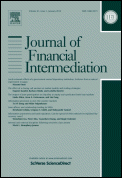
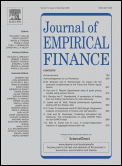
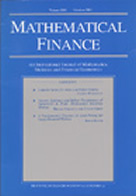 f
f





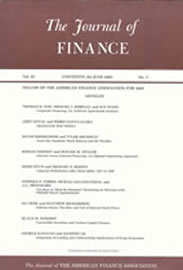

![[Quantitative Finance cover image]](images/cover_000_000.gif)

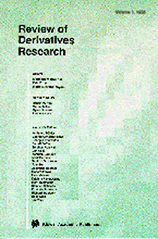

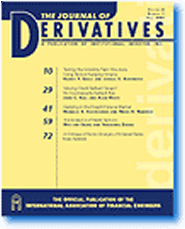

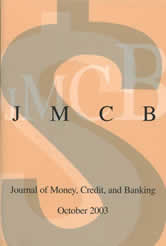









 J
J






